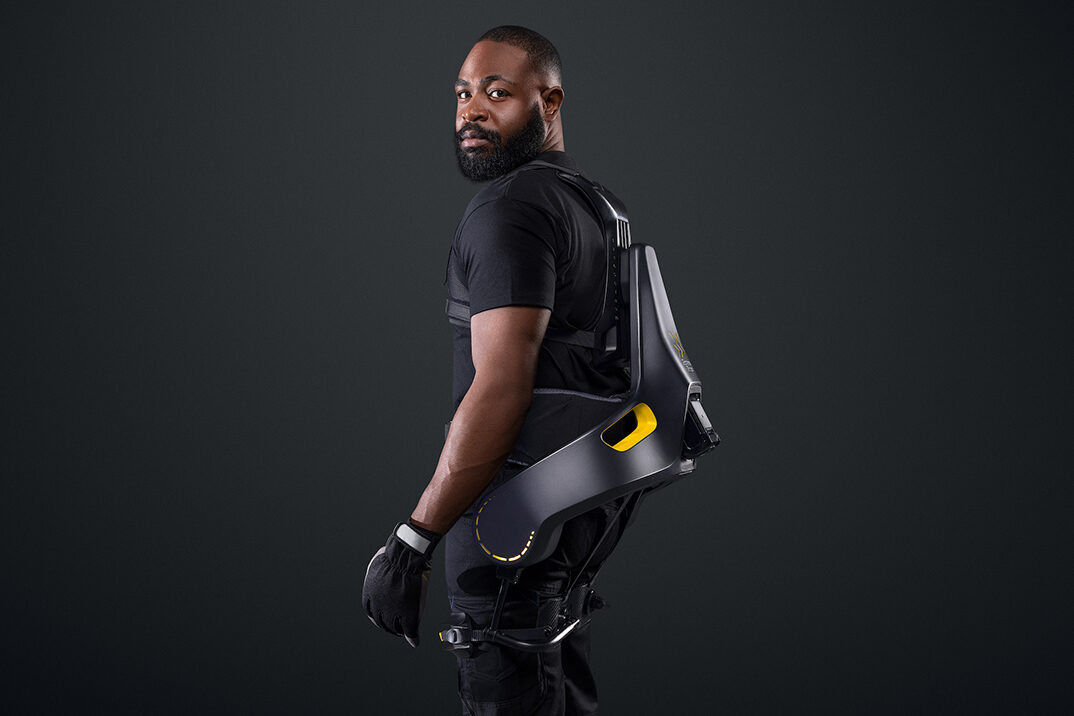At The WXO, we want to connect the dots across the Experience Economy and across the globe – so each week, we’ll be bringing you our round-up of the experiential stories that we think reveal something interesting, relevant or transferrable about the Experience Economy.
Welcome to Experience Radar 59, where we’re delving into dopamine dining, setting sail on the Orient Express Silenseas, and making friends with a Disney droid.
1. The Future Of Food Mapped Out
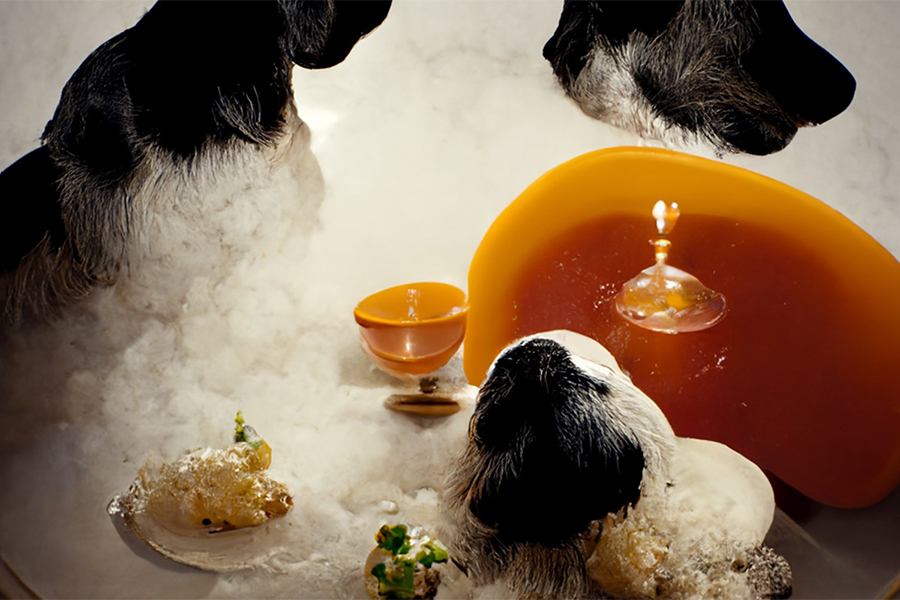
Culinary alchemists Bompas & Parr have revealed their annual Future of Food report, and 2023’s offering is as bonkers as it is insightful. The pair have collaborated with psychologists, biologists and artists to round up the trends the believe will shape the future of eating as we know it. After years of dining in isolation, unity, spectacle and a sense of occasion are back on the menu – average offerings won’t cut it in the culinary world in 2023, as diners seek out ever-more extraordinary and impactful experiences. “It’s at times like these that you have to get imaginative. You have to go beyond what’s expected. People are thirsty for newness and longing for experiential refreshment,” the report states.
Among the trends are:
- The emergence of soothing spaces that bring the calm of the outside in
- The rise of inflatable dining spaces that expand and contract in line with the number of people present
- The return of the Lazy Susan, only it’s your dining companions that revolve around the carousel
- Tik-Tok-inspired menus based on dishes that went viral
- AI-driven menu personalisation; extreme foraging as an endurance sport
- A surge in ‘dopamine dining’ designed to tap into the pleasure and reward centres of the brain
- The arrival of luxury solo dining as more people embrace being ‘self-partnered’
- The rise of haute canine cuisine as pet owners elect to dine out with their furry friends
- And a more nuanced approach to ethical eating that tackles food systems, not products.
2. Orient Express Swaps Rails For Sails
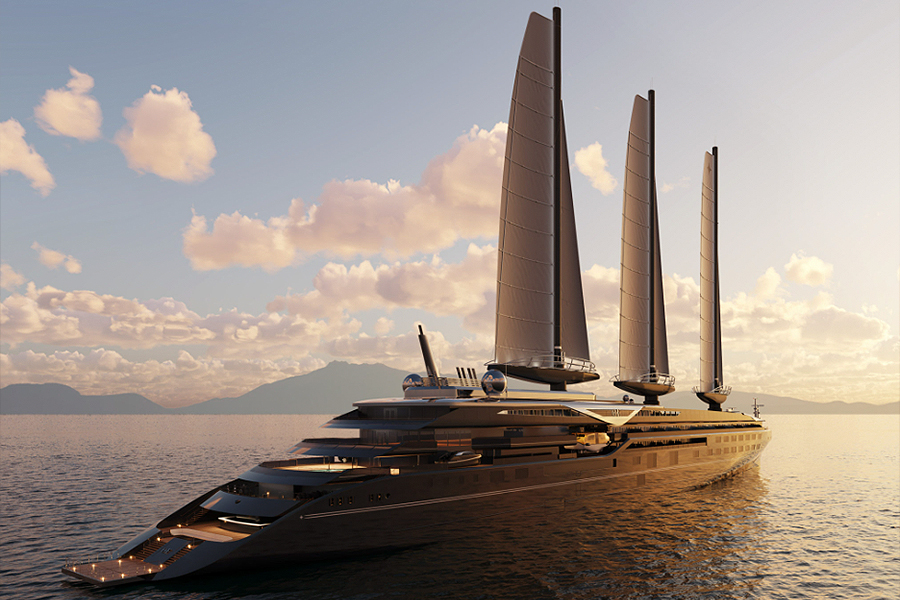
If you harbour fantasies of experiencing the golden age of travel on the high seas then your luck is in, as luxury train trailblazer the Orient Express has just launched what it’s claiming is the world’s largest sailing ship amid much fanfare. Called the Silenseas, the elegant, 220m vessel is the fruit of a partnership between French hospitality firm Accor and ship builders Chantiers de l’Atlantique that “pushes the limits of what is possible”. Sadly not due to set sail until 2026, the sailboat will aim to evoke a much-missed bygone era when writers, movie stars, painters and princesses would flit between Monte-Carlo and the beaches of Saint-Tropez, Cap d’Antibes and Cannes.
The ship will boast 54 suites – including an expansive Presidential Suite – two pools, two restaurants, a speakeasy serving classic cocktails, a spa, recording studio and cabaret lounge with architect Maxime d’Angeac in charge of the interiors. The ship will run off a mixture of wind power and liquefied natural gas. “With Orient Express Silenseas, we’re beginning a new chapter in our history, taking the experience and excellence of luxury travel and transposing it onto the world’s most beautiful seas. This exceptional sailing yacht, with roots in Orient Express’ history, will offer unparalleled service and refined spaces reminiscent of the golden age of mythical cruises,” said Accor CEO, Sébastien Bazin.
3. Elevating The Listening Experience

Factoring as many senses as possible into experience design is vital. While sight is an obvious sense to stimulate, designers are clocking onto the importance of sound within experiences as a means of moving, soothing or energising your audience. From entertainment giants to sleep specialists, tech brands are expanding the possibilities of audio to elevate the listening experience. As reported by Wunderman Thompson, Disney Plus is set to launch an IMAX Enhanced signature sound for home theatres this year that will provide an upgraded audio and video experience for Disney Plus viewers.
Meanwhile, EDGE Sound Research’s vibrating beats are introducing consumers to a “new sonic dimension to help you create your sense of reality and better engage with it,” according to the firm. The idea behind the tech is to up-level the listening experience by integrating vibrations and heightened bass and beats into bespoke furniture, from sofas and pillows to tables, so listening becomes a felt experience. The tech has huge implications for concert venues and stadiums, as well as the home. “Hearing and feeling is the combination we’re looking for to bring that next level of sensory experience,” EDGE’s Vincent Zhang told WT.
For more on the importance of audio immersive experiences, check out Campfire 81: Good Vibrations & Brain-Boosting Audio Experiences, as well as our upcoming Campfire reports on the Dreamachine and Onyo’s Tree of Life.
4. Disney Droid Transforms Guest Experience
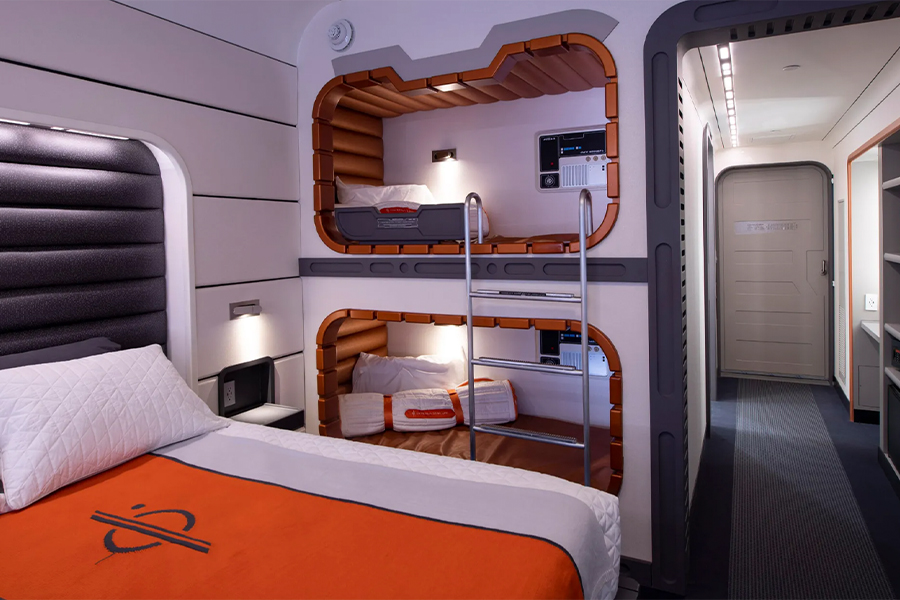
We’ve followed the launch of the Star Wars: Galactic Starcruiser at Walt Disney World – the theme park’s most immersive experience yet – with interest. Hinting at the direction in which Disney experiences are headed, the two-day voyage propels guests deep inside the Star Wars universe. Within it, a humble droid is shaking up the guest experience. As reported by ComicBook.com, the AI bot, dubbed D3-O9, is a feature of every guest cabin, and people are free to interact with it as often or as little as they choose. Like Alexa for another dimension, the droid listens, remembers and responds to guest request, becoming a part of the visitor experience and an important character within the narrative.
“The goal was for this to be a character that changes based on how you interact with her,” Dawson Dill, senior R&D Imagineer told ComicBook.com. “The interaction is just as important as the words. Are you betraying D3-O9 or trying to get her to become your friend? There’s a lot of ways we wanted to play it so D3-O9 felt like another member of the crew.” The bot is a litmus test for the AI tech, which will be used in experience design in the future. “We see an opportunity with some of this tech to make more personalised connections and have ones that are more connected to an evolving story. As you see more immersive storytelling experiences emerging with characters that want to engage with guests, then you’re going to need a platform like this,” Dill said.
5. The Gadgets Shaping The Future Of Tech
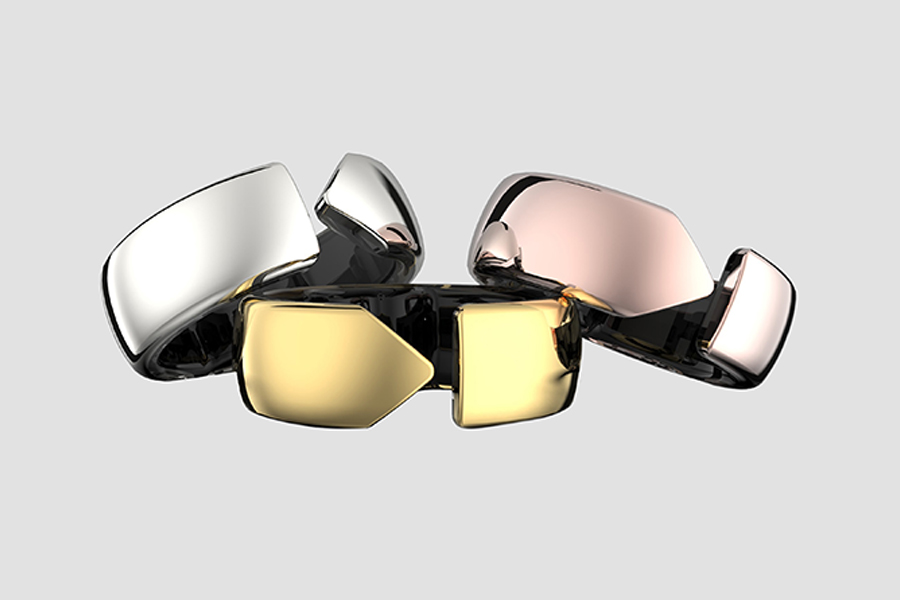
The annual Consumer Electronics Show (CES) recently took place in Las Vegas, giving attendees a glimpse into the future of tech and which gadgets will be propelling us into the future. Among the weird and wonderful game-changing devices was a flying car that promises to make Back to the Future fans’ dreams a reality. As reported by BBC Science Focus, the Aska eVTOL can be both driven on the road and fly through the sky, though it’s sadly still in the prototype stage at the moment. Masterminded by Aska Fly, the machine combines the convenience of a car with the safety and ease of vertical take off an landing (VTOL) flight.
Also spotted at the show was Samsung’s Premiere 8K projector that can create 150-inch-long images; Citizen’s new CZ smart watch that can track your alertness levels using tools based on NASA research, and the Asus Vivobook Pro laptop, which gives you a 3D audio-visual experience without the need for specs. Meanwhile, the Movano Evie is a wearable health tracker ring set on competing with the almighty Oura Ring, which measures everything from sleep patterns and calories burnt per day to ovulation tracking. Last but not least, the lightweight Apogee suit looks to shake up manual labour by taking up to 30k of weight off your back through its exoskeleton design – the future is already here!
6. Wellness Hotels Merge Health And Hospitality
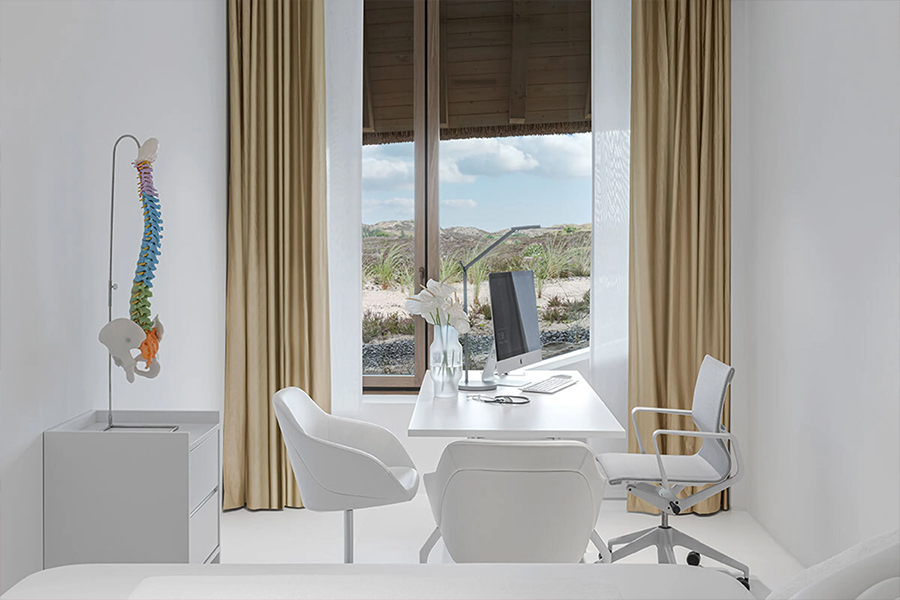
As the health and wellness movement goes from strength to strength, we’re seeing the emergence of a new breed of luxury wellness hotels and retreats that aim to combine the best in healthcare developments with high-end hospitality. As reported by Wunderman Thompson, luxury hotels want in on a slice of the wellness tourism market, which is set to be worth over US$1 trillion by 2030. With the pandemic highlighting the importance of health, hotels are tapping into a growing global need to dial up our wellness routines. Health is becoming an integral aspect of experiential travel and the new breed retreats are bringing scientific therapies into the spa, creating chic spaces that are halfway between a hotel and a hospital, where frazzled travellers can enjoy some R&R.
At The Four Seasons Resort Maui at Wailea in Hawaii guests can get a full body MOT via IV drips; energy-boosting ozone treatments, and cutting-edge stem-cell therapy costing $12,000 an hour. Treatment programmes, diet and activities will be hyper-personalised to guest’s specifications based on the results of genetic biomarker tests. At medihotel Lanserhof in Germany, meanwhile, you can take part in mitochondrial training gym sessions that simulate oxygen deprivation, have an MRI scan and talk to the hotel’s in-house psychologist.
7. Gallup Arts Opens Virtual Museum
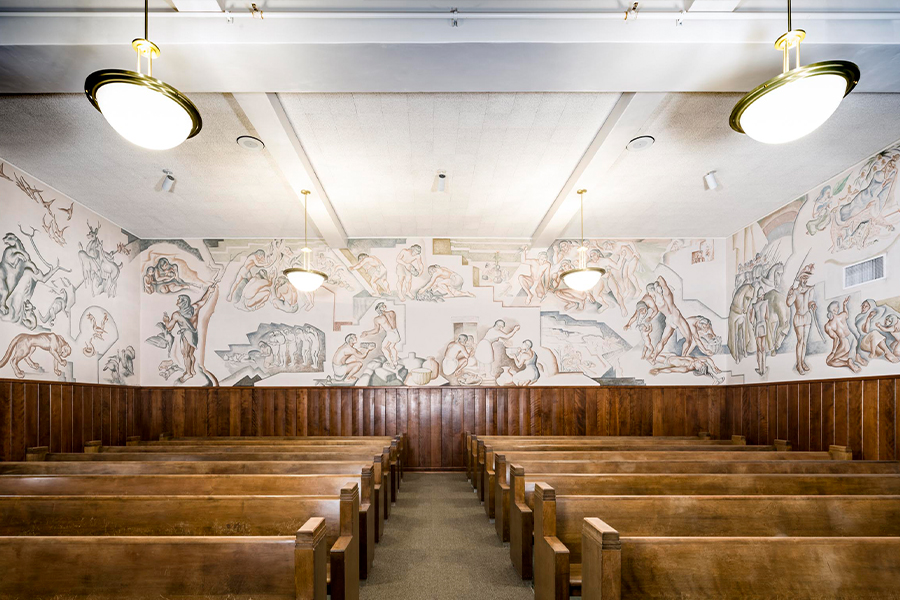
Gallup Arts is to open an interpretive and interactive virtual museum called Gallup New Deal Art showcasing the best in New Deal artworks, which helped sustain thousands of artists, photographers, film-makers and craft workers during the Great Depression. Gallup New Mexico is home to over 150 New Deal artworks, including murals, prints and furniture, across various locations and isn’t available and accessible to all. “The goal of this project is to fulfil the New Deal’s mandate of creating public art for public purpose,” explains Rose Eason, Gallup Arts’ executive director. Designed by experts in collaboration with Gallup artists, the online museum will contain scholarly info and creative content.
Made possible by funding from the National Endowment for the Humanities, the GNDA Virtual Museum is designed to do the work of community building, creating a multi-dimensional, inclusive and participatory online art museum experience that excavates the past in order to create pathways of understanding in the present, creating space for communal reflection and dialogue. “A lot of important issues we think about today are represented in the collection; issues of representation, inclusion and whose history gets told. Art creates a space to have a dialogue,” Eason added.

